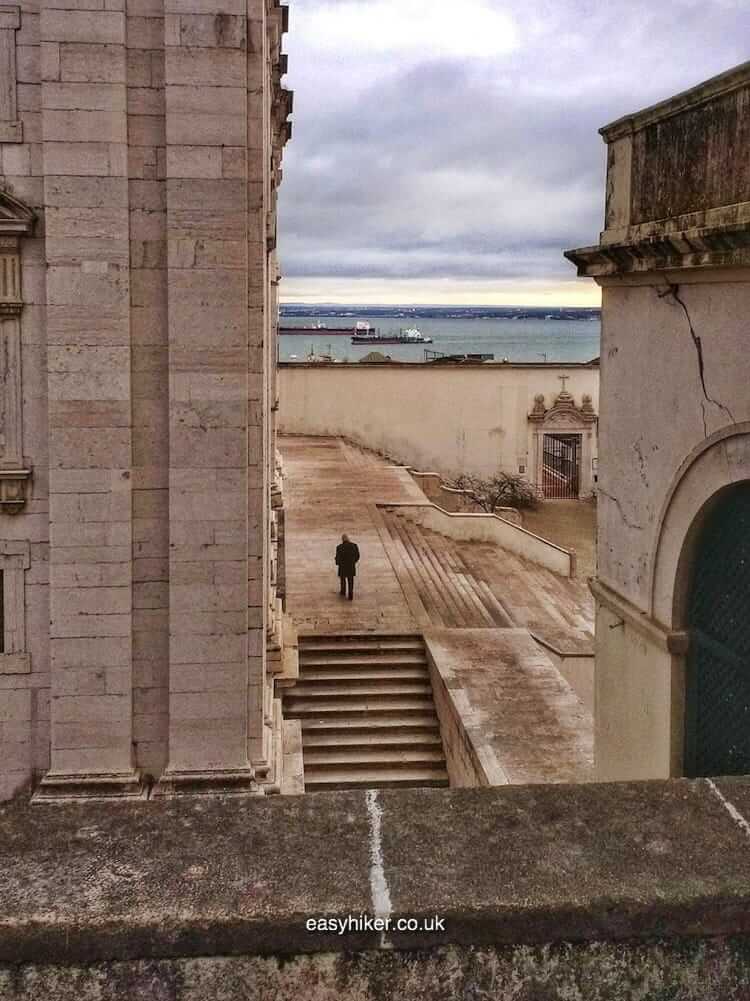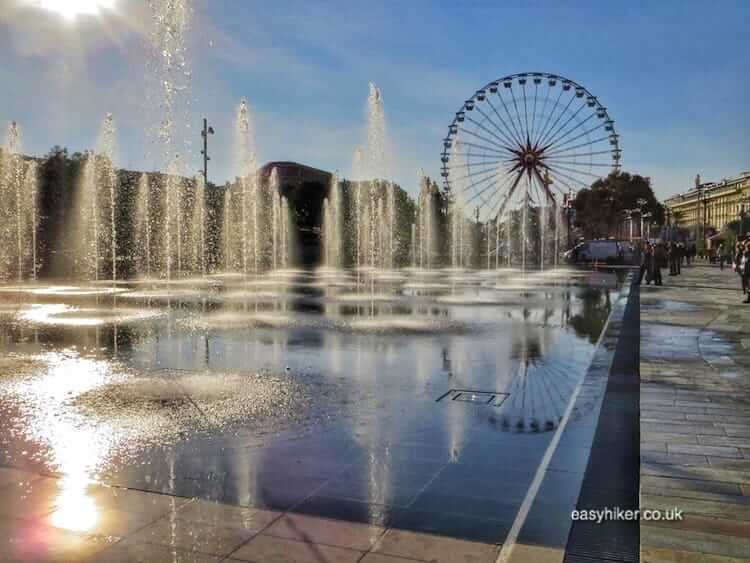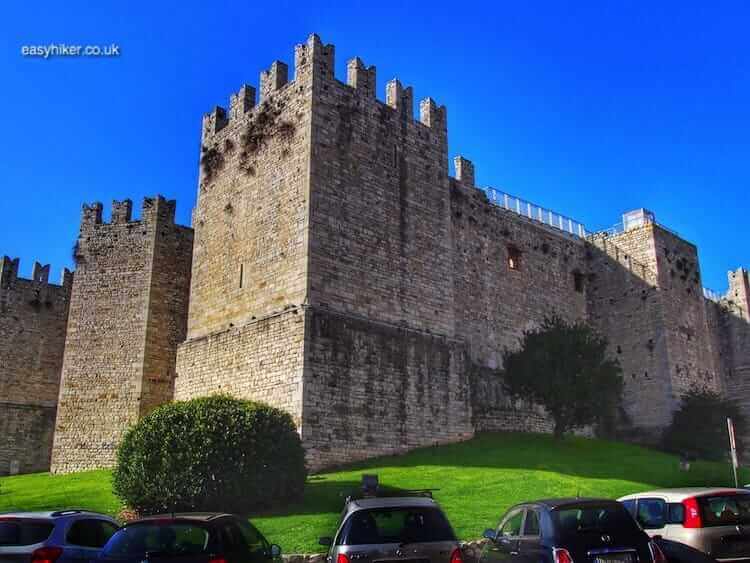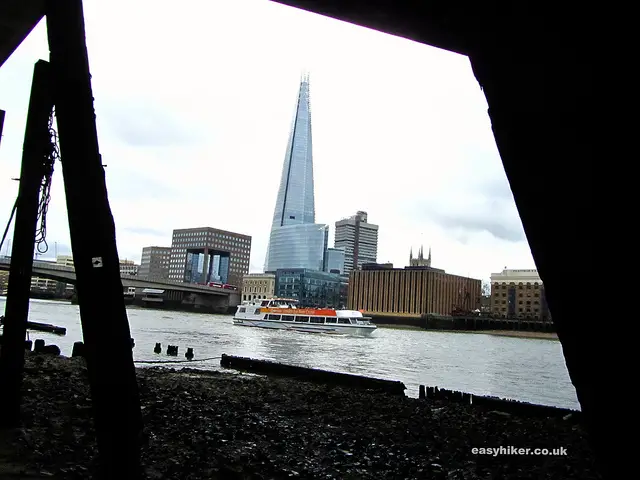One of the rules of “adventurous” travel is that you should not read too much in advance about a place you are going to visit, because otherwise, your trip is in danger of becoming a mere ticking-off-exercise of seeing things “in the flesh” that you have already studied in great detail on the Internet. Give the world a chance to surprise you!
There is, however, some information that it is useful to have before your arrival. What this information may actually contain differs from person to person as it depends very much on your interests.
Personally, I always like to have an idea of how the different districts of the city relate to one another: the waterside (if there is one) to the hills, the residential neighbourhoods to the commercial districts, that sort of thing.
Never has this been as useless as it has proved for our recent trip to Lisbon with its confusing succession of hillside quarters.
I can well believe that after a few years of living in the city, you will as easily tell these individual quarters from one another as you can distinguish between individual colours, never mistaking your Graca from your Alfama. But for the visitor who has never been to the Portuguese capital and only intends to spend a long weekend there, such distinctions are pointless.
Which is why, for the short-term visitor, a binary distinction will do: up the slopes of Lisbon, there is the uptown …
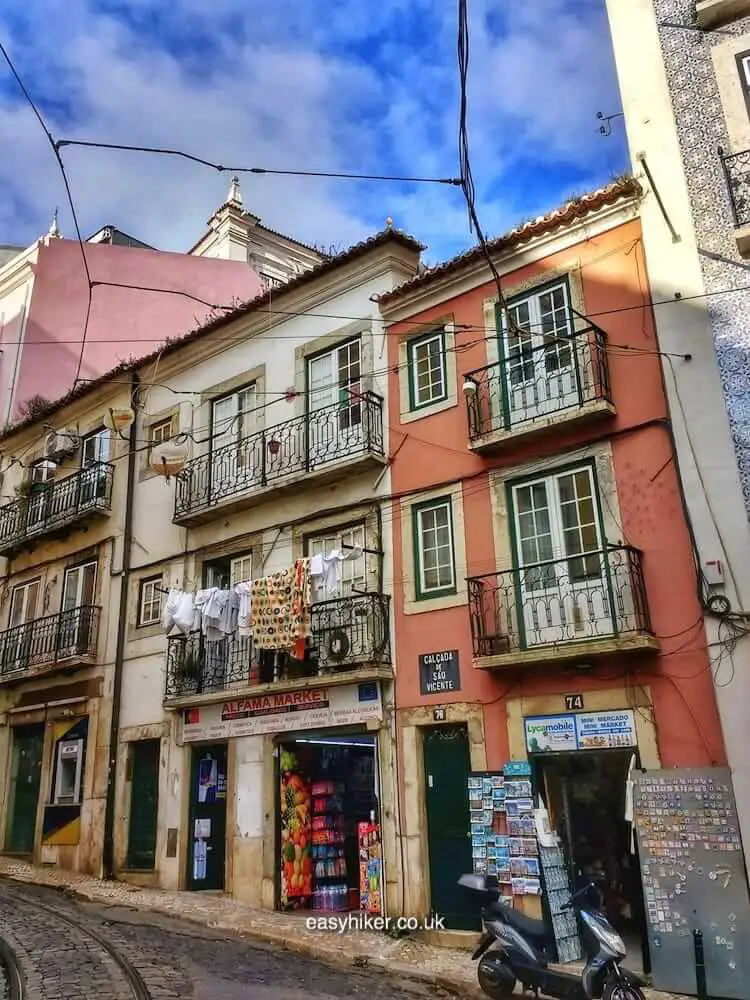
… and near the coast, there are the downtown districts.
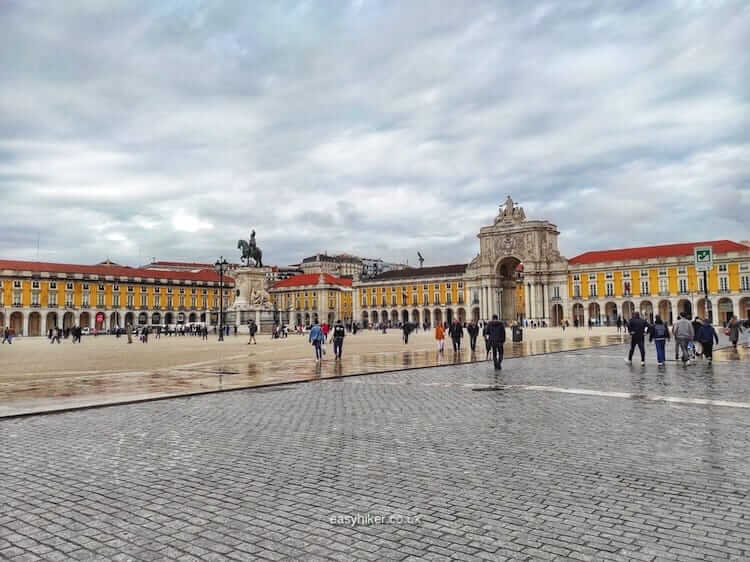
Discover the Charms of Uptown Lisbon
To make the distinction between these two is actually quite easy. In fact, uptown and downtown Lisbon are two different worlds that were separated by the most important event in the city’s history: the earthquake-cum-tsunami of 1755 that killed nearly 40,000 people (one in every five inhabitants) and destroyed 85 percent of Lisbon’ buildings, leaving an indelible mark in the city as well as on the souls of its citizens.
These citizens certainly learned their lesson – once flooded, twice shy – and as a consequence, tsunami warnings are everywhere in today’s coastal districts.
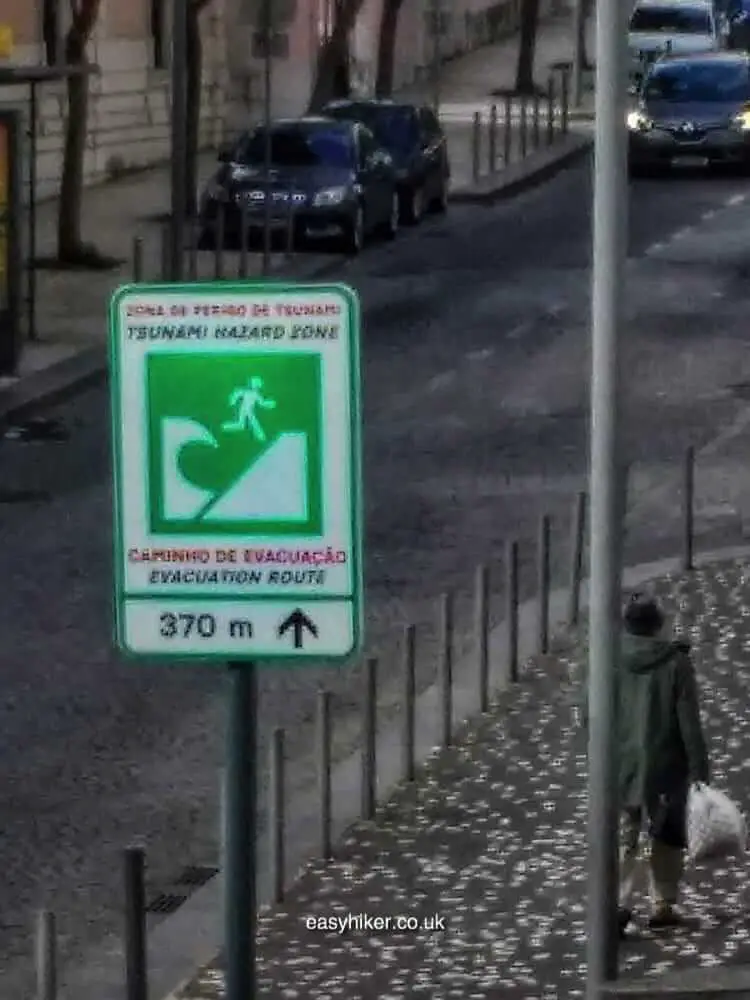
The catastrophe of 1755 also unraveled the downtown urban fabric, while this was not the case uptown. The earthquake may have struck nearly all districts with even force, but the tsunami that rolled in 40 minutes behind the quake destroyed practically everything of downtown Lisbon that had survived the seismic shock while failing to reach the districts higher up the slopes.
In uptown Lisbon, just about enough was left standing with which one could recreate the ancient street patterns.
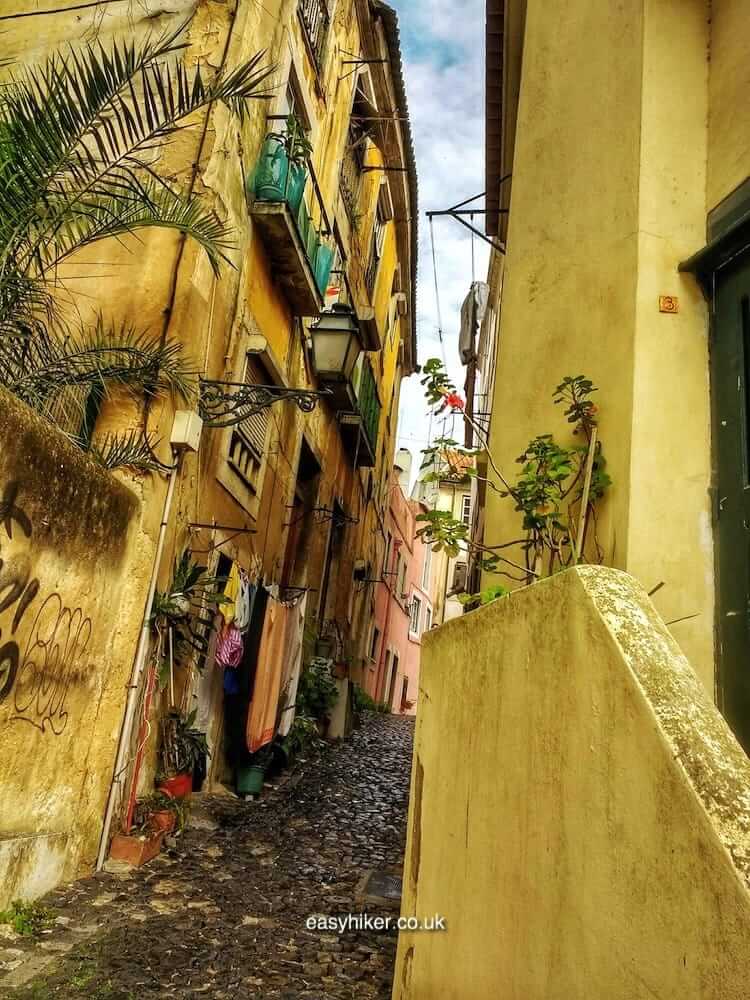
For this walk to see the charms of uptown Lisbon you will need no detailed map. Just decide on the general direction you intend to take: east-west or west-east.
You could, for example, start at the Sao Vicente de Fora convent and walk down the scenic street called Escolas Gerais …
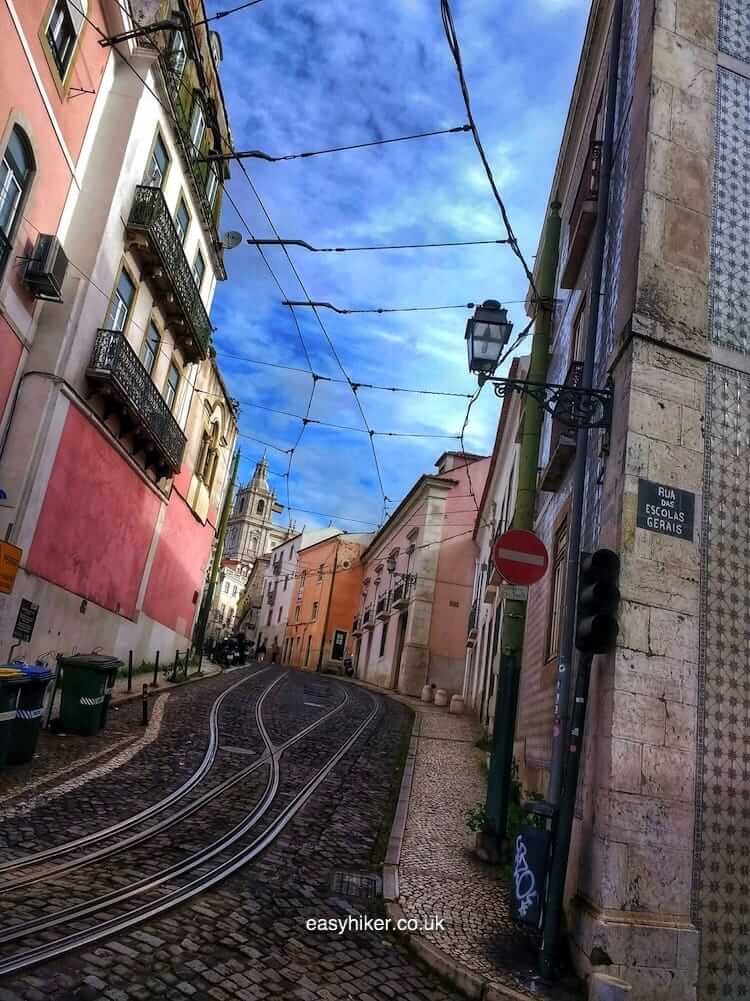
… before continuing westward all the way across the old town to the Via del Funiculario, perhaps the city’s most photogenic street.
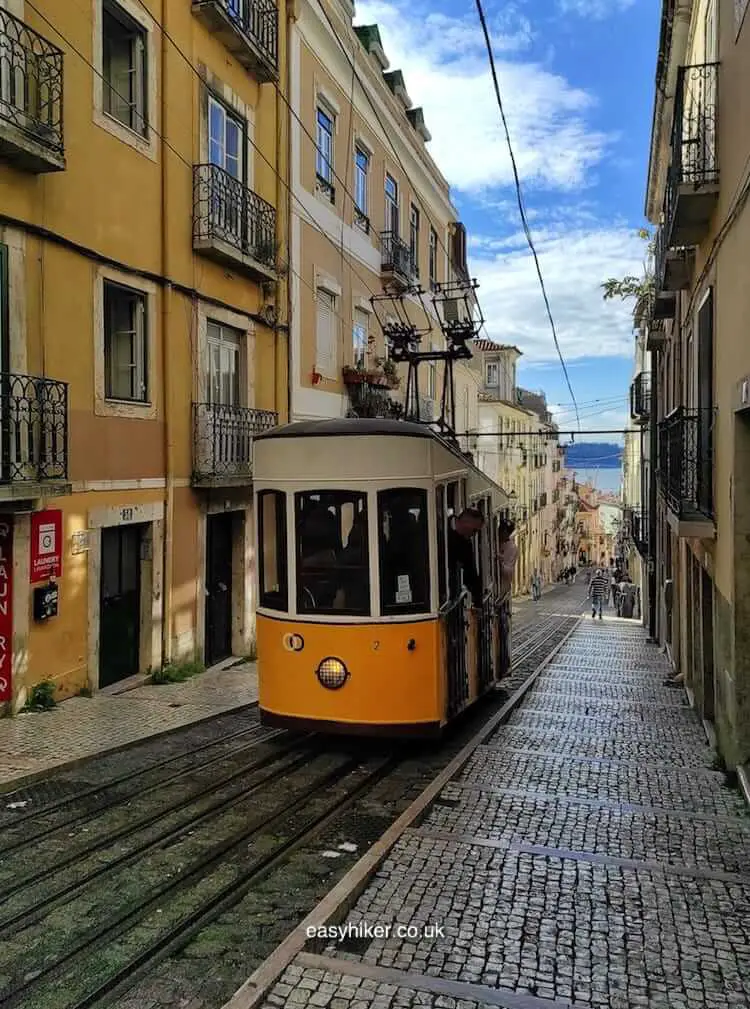
For some, this may not be an easy walk: if you like laborious climbs, you have come to the right place, and behind every stairway on your route, another stairway opens up.

This is because the whole ancient city is constructed like a wedding cake: in layers upon layers.
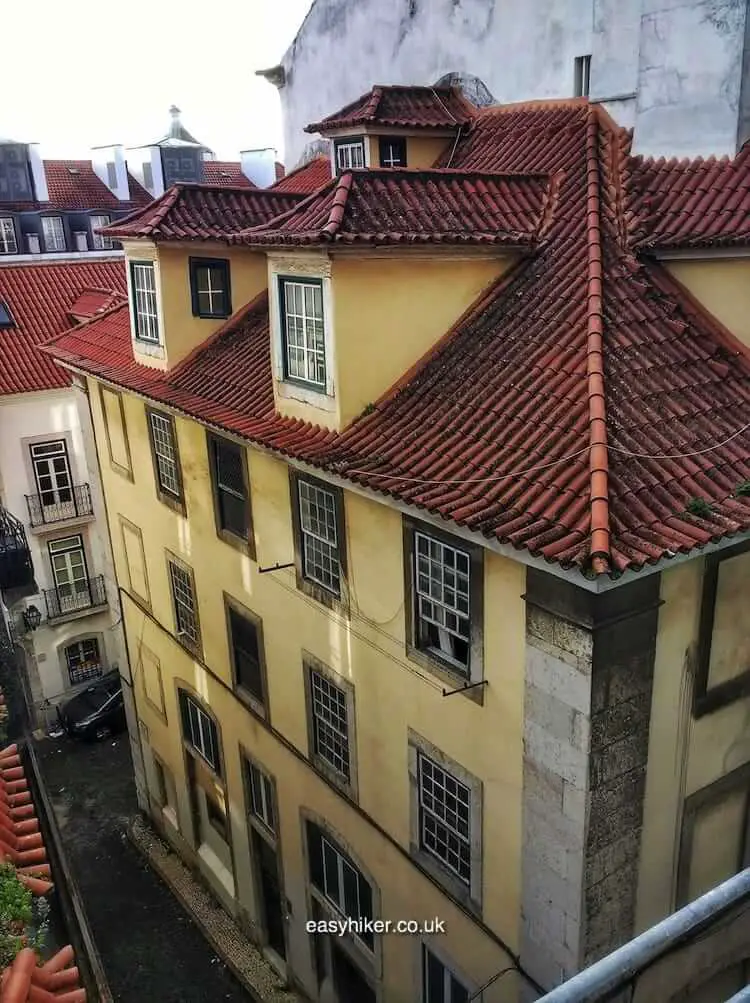
The stairways, meanwhile, have their own special way of rewarding your efforts: once you have finished the climb, a sometimes merely interesting and sometimes downright spectacular view will lie at your feet – the steeper the hill, the more scenic the panorama.
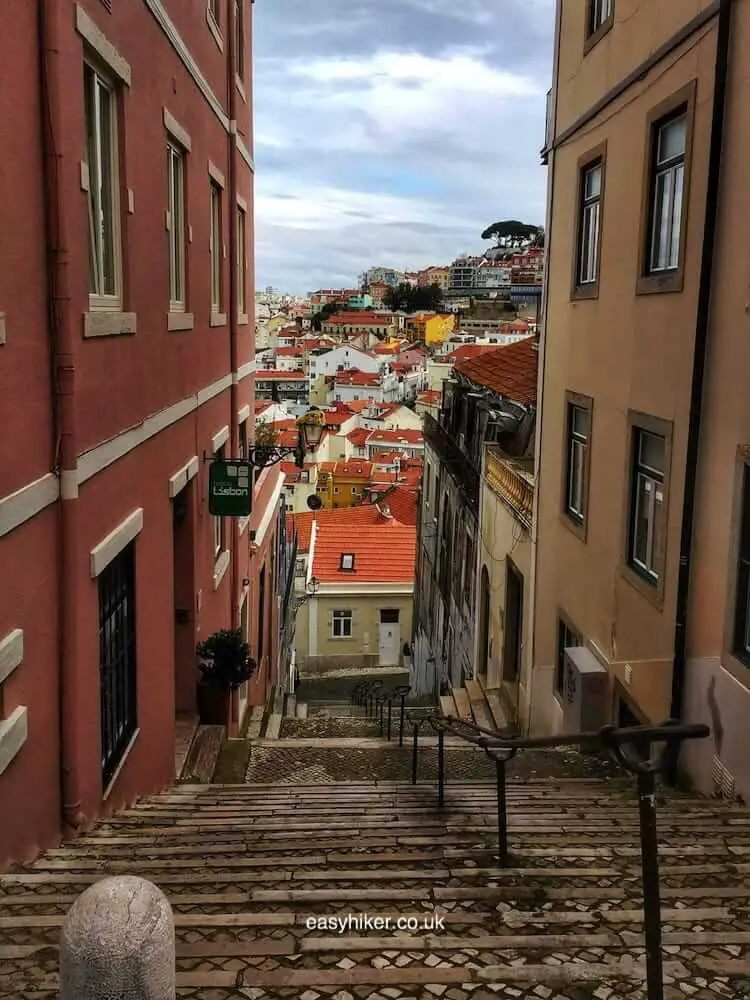
Even better are the moments of sheer magic: when one of the houses in the block seems to have, abracadabra, disappeared into thin air, and the urban fabric suddenly opens up into a broad vista.
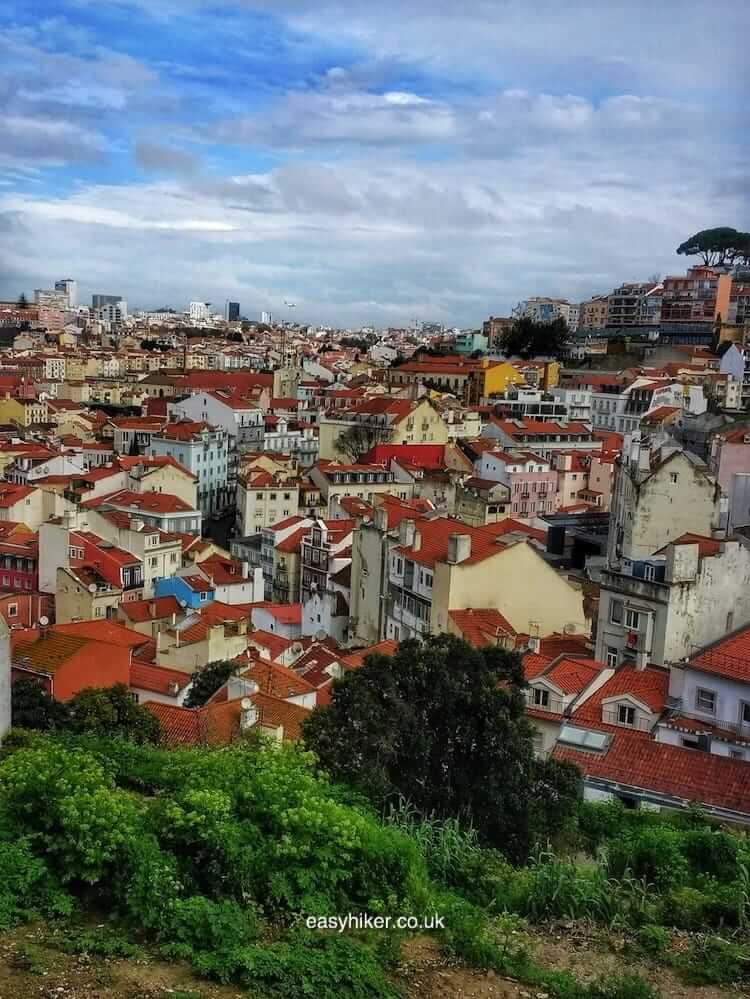
And if you are getting tired of walking up and down all those streets and stairways, you can always continue your exploration of Lisbon’s hillside quarters by riding one of the ubiquitous tuk-tuks. These three-wheel minicabs, often lovingly individualized by their owners, are as charming as their uptown habitat.
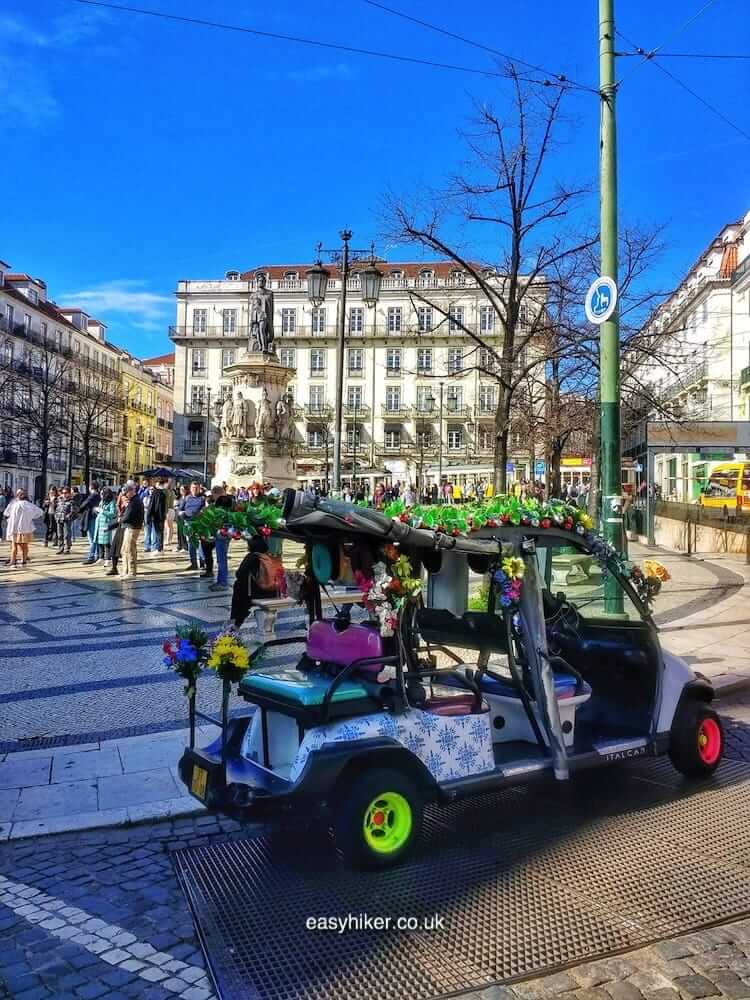
By contrast, the equally ubiquitous fake vintage tourist taxis are a little too large for some of the narrow uptown streets, which is why you see most of them on the lower slopes of the old town in the (slightly more spacious) vicinity of the Lisbon Cathedral.
Another problem is that these vintage taxis may also be a little too naff for some visitors.

Or do you disagree – and rather fancy a ride in one of these stylish automotive classics while finding the tuk-tuks unbearably twee?
Well, this is a little the thing about Lisbon. Charm is the old town’s calling card, but charm – unlike sublime beauty or historic importance – always lies in the eyes of the beholder.
The Alps are awe-inspiringly magnificent, and whatever you may think about the ruins of Rome, the cradle of the western world, they have something to tell us.
There is nothing similarly indisputable about Lisbon, however, and what you want to make of the city and its uptown districts is, ultimately, up to you.
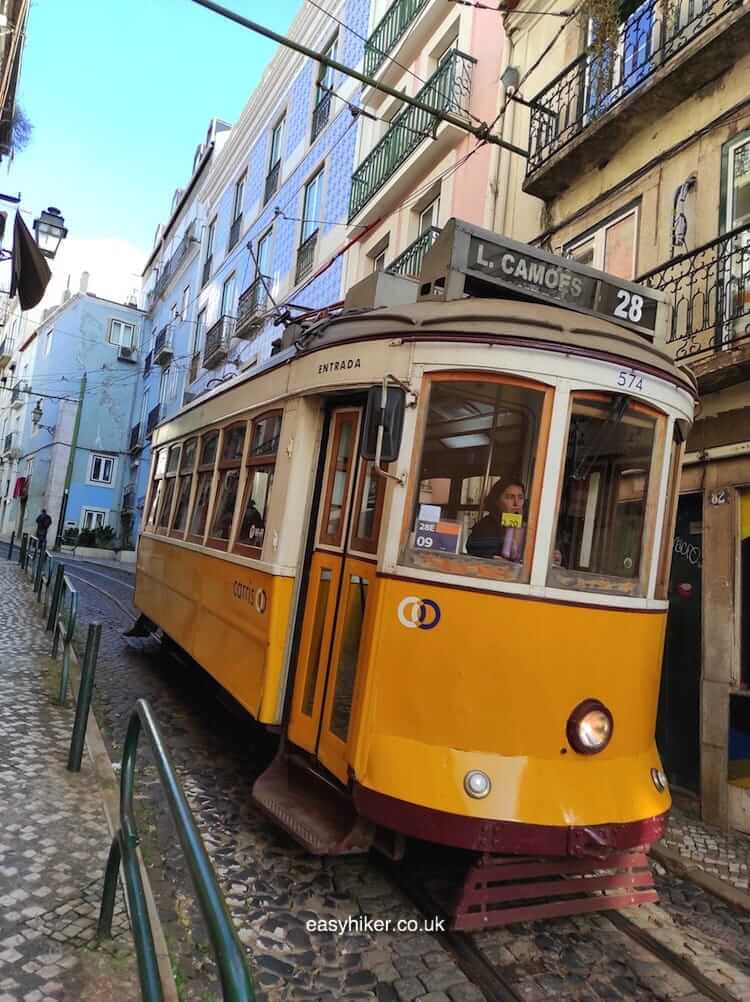
Next week, we will ask you to accompany us on a trip into a different world with a different type of charm – charm of the wind-blown type that has been spiced with a generous dose of melancholy.
Welcome to the other side of Lisbon!
